The wild camping, the isolation, the hiking, the heated tipi’s with their innovative ventilation, … We think our Highland Wilderness Glamping Trips are some of the most Covid safe adventure holidays going.
In addition to the measures we’re taking and asking guests to take, here are those measures we are taking with regards to our pack pony supported hiking trips.
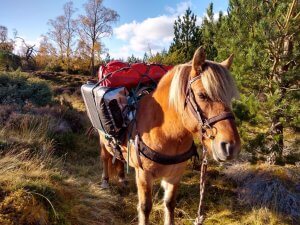
Walking is intrinsically much safer since it’s an outdoor activity. Air currents disperse droplets and aerosols quickly. Additionally the movement involved in the activity further aids the process. If social distancing is maintained outdoors, it’s extremely difficult to receive an adequate infectious dose that overwhelms a healthy immune system.
“The risk outside is incredibly low especially if you stay two-metres apart… Droplets fall to the ground quite quickly and aerosols are dispersed by air movements and even more by breezes and winds.”
“outside activities pose very little, if any, risk of new infections“.
“In one Chinese study of nearly 1,300 transmission events, only one occurred outside and they broke social distancing rules,”
Keith Neal, Emeritus Professor of the Epidemiology of Infectious Diseases, University of Nottingham
Additionally, in a Downing Street briefing, Jonathan Van-Tam, the Deputy Chief Medical Officer for England said:
“there is a definite truism across all of the science literature that ventilation is a most critical part of reducing transmission from respiratory viruses”.
“[normal breezes and air currents appeared to quickly disperse] any kind of plumes of anything. So from that perspective, it is absolutely categorically clear that outdoor spaces with higher degrees of ventilation are less problematic environments for transmission than indoor spaces.”
This is also a lot easier in the outdoors. We ask guests to observe 2 m social distancing and to have a face covering at hand should it be quickly needed. A Buff is ideal. “Close contact” is defined as spending 15 minutes within 2 meters of an infected person.
When we talk about “close contact” it’s important to point out that we’re not looking for people the person may have passed on the street or in a shop, as the risk in these situations is very low. A close contact involves either face to face contact or spending more than 15 minutes within 2 metres of an infected person.
Nick Phin, Public Health Matters Blog, Public Health England.
It’s were there is appreciable risk of you taking onboard an adequate viral dose for your immune system to become overwhelmed and hence become ill.
If we do come across other people on the trail our passing is only momentary and it doesn’t qualify as “close contact” The risk in this regard is very small.
We will be passing through gates, etc on the hike so we ask guests to carry their own bottle. Due to the large number of local whisky distilleries we have no problem sourcing hand sanitiser! We have a very large container of it at base to refill your dispenser/container.
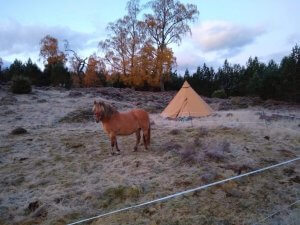
We have always tended to head to the quieter areas as we are likely to see more wildlife. Our Highland Wilderness Glamping Covid safe family adventure trips are no exception. The Scottish Highlands are one of the least inhabited areas of Europe. With an average population density of 9 people per square km, they are comparable only to northern Scandinavia. This compares to an average of 400 people per square kilometre in England. The distribution is far from even, creating huge uninhabited areas! If you know where to go it’s quite easy to avoid people.
With all the major Scottish cities being more than 2 hours drive away and with so much countryside, it isn’t difficult to escape up here in the Cairngorms. One of the main ideas behind this concept is to camp in comfort in some of the most beautiful, remote and secluded locations. Our overnight wild camp is reached by leaving the trail and picking up the faintest deer trail! We can pretty much guarantee we will have the location to ourselves!
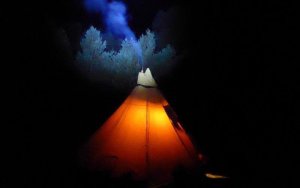
We think a large Tentipi heated with a woodburner, provides a covid safe environment to socialise. Here’s why:
Social Distancing:
With over 23 square meters of floor space in our Tentipi Safir 9’s, it’s possible to seat 6 people and still maintain 2 m social distance! Yes, a hexagon with 2 m sides will comfortably fit inside an octagon with 2.1m sides!
Covid safe ventilation:
As previously stated ventilation is the key in reducing the chance of transmission. One of the design characteristics of the Tentipi (Nordic Tipis) is their ventilation. Designed to accommodate an open fire, intake vents (11 in graphic) around the base of the Tentipi allow air to flow into the tent while ventilation in the apex (9 & 10 in graphic) allows smoke to escape.
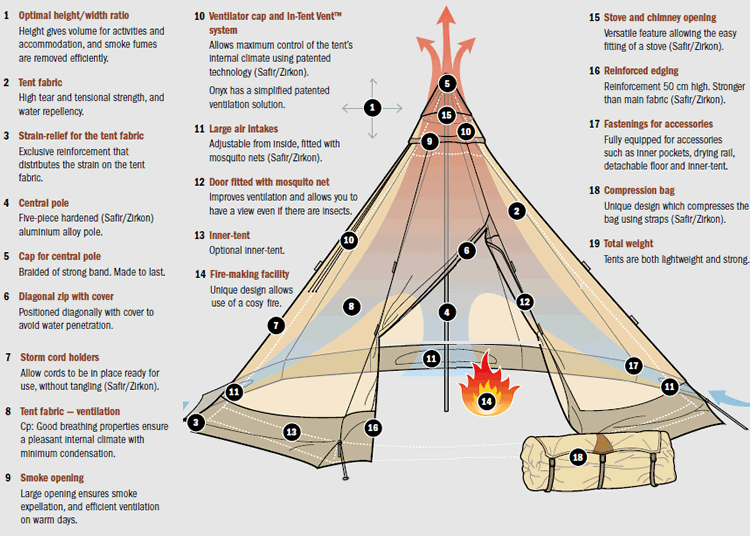
During summer months this ventilation happens passively as a greenhouse effect develops within and the warmed air rises. The woodburner running enhances it greatly.
An additional effect of warming the air is the drop in its relative humidity. This potentially has positive implications with respect to airborne transmission. There is presently some debate as to the role of airborne transmission. In dry air aerosols (less than 5 microns) can evaporate very quickly, in less than one-tenth of a second! This drying process potentially damages the virus preventing it being infectious i.e. it disinfects.
The portable woodburner sits in the centre of the Tentipi with the flue rising 3.1 meters to the apex. Further heated by the flue increases airflow and reduces relative humidity. Sitting 2 m apart around the stove, expired air drifts up and out of the top vents.
The main tent fabric is an impregnated polycotton canvas and is hence breathable. The benefits are 2 fold. In combination with a heat source (camp woodburner) it helps dry the air for the benefits explained above. Secondly it is a porous service;
Preliminary research published in The New England Journal of Medicine indicates the virus doesn’t survive on porous surfaces for more than 24hrs. Porous surfaces, like wood, cardboard and natural fabrics are thought to have a dehydrating effect on the virus.
The same research found the virus may remain viable on plastic (polypropylene) and stainless steel (AISI 304) for up to three days. On copper, well known for its antimicrobial properties, it lasts for no more than four hours.
To be on the safe side though our approach is to simply air the tent for 72 hours between groups.
A wet cloth and soap solution cleans the groundsheet at the end of the evening. Yes, soap is a disinfectant! It works by breaking up the exterior cell wall of SARS-CoV-2, the virus that causes Covid-19.
We make the simple rule that each household sleeps in separate tents on this covid safe adventure.
Each Exped Deep Sleep System comes with its own pumpsack. Whilst on the move this acts as a stuff sac keeping everyone’s bedding separate. Come the end of the trip, camp sheets, pillow cases, duvet covers and pump-sacks are laundered in the normal way. Sleeping mattresses, duvets and pillows are cleaned and not used for 72 hours.
“In general, because of poor survivability of these coronaviruses on surfaces, there is likely very low risk of spread from food products or packaging.”
Centres for Disease Control and Prevention, USA Government
“Although it is very unlikely that COVID-19 is transmitted through food or food packaging, as a matter of good hygiene practice anyone handling food must wash their hands frequently with soap and water for at least 20 seconds.”
Guidance for food businesses on coronavirus (COVID-19), UK Government
In addition to general good hygiene as above, guides preparing food for the group will wear a face covering. With a hot camp wood burner sterilising the Stainless Steel eating utensils is easily.
Depending on the number of households involved we are accepting a maximum of 4 to 6 guests on these covid safe adventure trips.
As previously stated, research has found the virus doesn’t survive beyond 72 hours on any surface. In addition to doing the regular cleaning we leave 72 hours between trips to add an extra level of security.
We hope you agree our Highland Wilderness Glamping Trips provide a covid safe family adventure.
In Scotland we are far enough north that our hours of daylight vary considerably with the seasons. Our guests often comment about the length of the day in summer and speculate about how we cope with the short winter days.
21st December – the winter solstice is technically the shortest day of the year. Practically speaking though, any day around that time of year will feel like the shortest day if it is pretty driech whereas if 21st December is a bright, sunny day it might not seem all that short in comparison.
December, being the month of the winter solstice, witnesses the shortest day of the year. Around December 21st, the winter solstice, Scotland experiences its minimal daylight hours. In Edinburgh, the capital city located at 55.95 degrees north, daylight lasts approximately 6 hours and 57 minutes on the shortest day. The sun typically rises around 8:42 AM and sets at 3:39 PM.
Traveling further north to Inverness, which sits at 57.48 degrees north, daylight decreases slightly more. Here, the sun rises around 8:55 AM and sets by 3:33 PM, giving just over 6 and a half hours of daylight. It feels like a lot less than this if it’s not a sunny day! There are days in winter when you feel like you need the lights on all day.
The further north you are, the longer it takes for true darkness to arrive after sundown. In the northern isles of Scotland, such as the Shetland and Orkney Islands, the daylight during the summer solstice stretches even longer. Lerwick, the largest town in the Shetland Islands at 60.15 degrees north, experiences sunrise around 3:38 AM and sunset at 10:34 PM, offering about 19 hours of daylight. The twilight here is so prolonged that the sky never fully darkens, creating a phenomenon known as “simmer dim” – a perpetual twilight that bathes the landscape in a soft, ethereal glow.
21st June is the summer solstice when technically we have the shortest night of the year and therefore the longest day. In Inverness, situated at 57.48 degrees north, the sun rises around 4:14 AM and sets at 10:19 PM, providing nearly 18 hours and 5 minutes of daylight. This extended daylight is a hallmark of Scotland’s northern regions, where the sun barely dips below the horizon.
The extended daylight hours of the summer solstice are celebrated across Scotland. Festivals, outdoor events, and various activities are scheduled to take full advantage of the long days. From exploring ancient castles and hiking the Highlands to enjoying coastal walks and partaking in traditional Scottish festivals, the opportunities are endless.
Residents and visitors alike adjust their routines to make the most of the daylight. Late evening walks, barbecues, and social gatherings become common as people revel in the extended light. This period is also ideal for photography, as the prolonged golden hours provide exceptional lighting for capturing Scotland’s stunning landscapes.
In the far north, near the Arctic Circle, the experience of the summer solstice can be particularly unique. The Orkney Islands, for instance, not only enjoy extended daylight but also host cultural events that celebrate the solstice. The St Magnus International Festival in Orkney is a renowned arts festival held around the time of the solstice, featuring music, theater, and dance, all set against the backdrop of nearly continuous daylight.
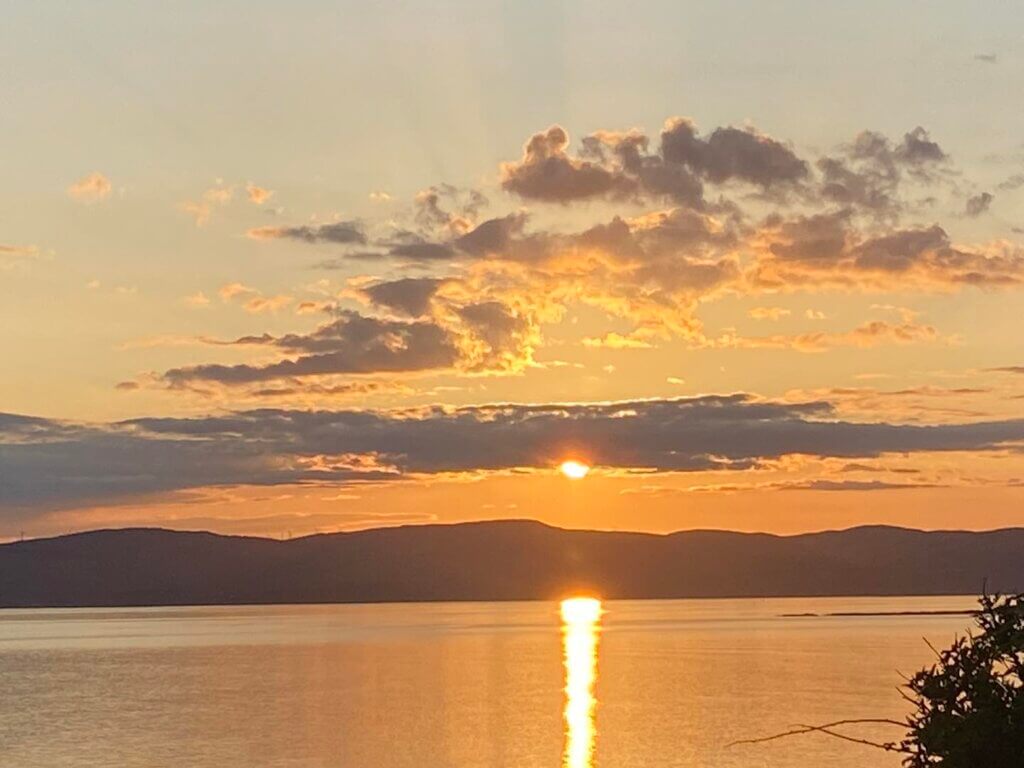
Short days, dark nights – what are the advantages?
The aurora are only visible in dark skies so the best time of year to see the Northern Lights in Scotland is the autumn and winter months.
The brief daylight hours in Scotland during winter can impact daily routines and activities. Residents often make the most of the available light, adjusting work and leisure schedules to fit the limited daylight. Many embrace the long evenings by indulging in indoor activities, such as enjoying the warmth of a fire, reading, or engaging in traditional Scottish pastimes. It’s the ideal time to get your knitting needles or crochet hooks out and get creative with yarn.
Visitors to Scotland during the winter months should plan their activities accordingly. Sightseeing is best done during the middle of the day, and early sunsets provide an excellent opportunity to experience Scotland’s vibrant nightlife, cozy pubs, and cultural events.
Despite the limited daylight, Scotland’s winter landscape holds a special charm. The low angle of the sun creates a unique, soft light that enhances the natural beauty of the scenery. Frosty mornings, snow-dusted hills, and the chance of witnessing the Northern Lights make winter a magical time to experience Scotland.

Metcheck – chart of sunrise time, sunset time and hours of daylight per day.
Scotland.info – scotland weather and climate
Pros and Cons of each season in Scotland
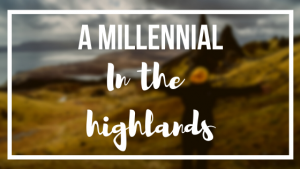
Guest article written by Tammy Reynolds: why would a Millennial choose to live in the Scottish Highlands?
Perhaps some context might help. I am very much a southerner, grew up in the Cotswolds and spent my college years in London, I like bubble tea and social media. Yes, I am a millennial.
And now I live -very nearly- in the middle of nowhere, Highlands of Scotland.
Why do you ask? Well, let me tell you, both the pros and cons of living in this beautiful part of the world.
I don’t know about you, but I found breathing in the stale, sweat-ridden, thick air of the London underground quite suffocating at times. We get so used to the undesirable smells of the city that we become nose-blind. We tend to ignore much of our surroundings this way, but up here, with the freshest of air all around me, I’m finding myself smelling things again, like the fresh scent of pine trees, the smell of water and fresh bread. Yes, there’s also the undesirable smells of sheep and cow poops, but it only makes you all the more appreciative of the nicer smells.
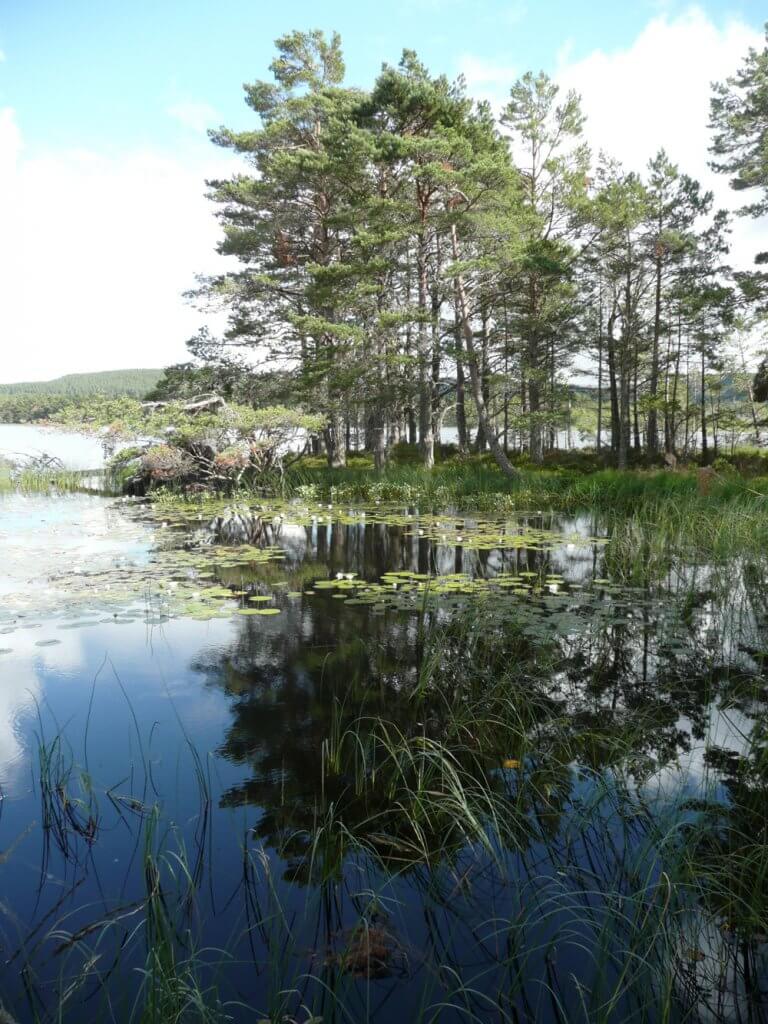
The peaceful scenery of Loch Mallachie, near Boat of Garten
I know that for some, quiet drives them mad. But up here, spending time in the quiet can actually be rather loud. The birds are tweeting, the wind is blowing, rain is pattering on, amazing what you can hear when you shut up for a little bit. There’s almost a symphonic way the sounds up here come to be, it has helped me gather my thoughts in a natural and non-pressured way, just by sitting on a chair in my back garden. Also, with quiet comes confidence, the wildlife that surrounds me up here brings about little footsteps of squirrels and the flapping of birds nearby. What a way to make yourself feel like a Disney princess.
People actually say hello and have a conversation with you, cares for who you are as a person. A casual walk in the forest with your pup becomes a full-on chin-wag with another walker, you get to see all of those you tend to see in your routine but also have the chance to meet someone new who is just as friendly as the rest of them. Being here surrounded by those types of people has changed my sense of self. I never have to put on a facade around here as people tend to be open and accepting.
I cannot stress enough how important being close to nature is to all of us. We are finding more and more people not just my age, but older and younger, to have bouts of depression and other mental issues that cannot be solved by medicine alone. Doctors are now starting to recognise the importance of nature and are now starting to prescribe wild therapy as a source for healing. And I can vouch, it definitely does help, I cannot stress this enough.
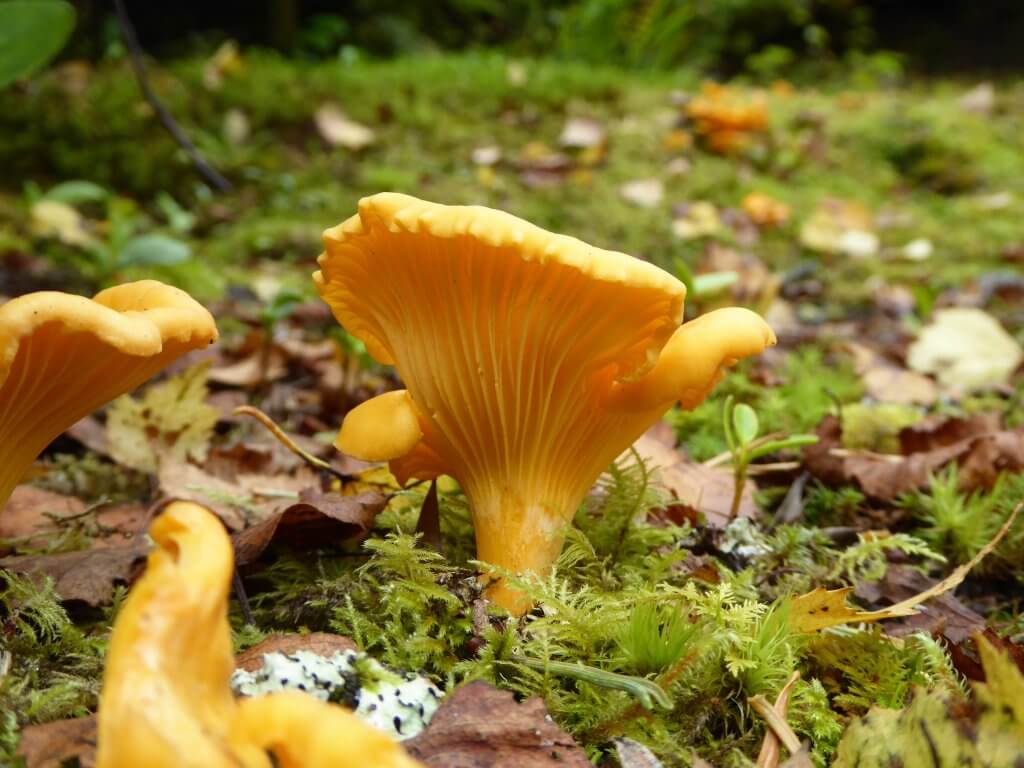
Nature bursting back into life during spring hiking.
We’ve come to realise just how much we need friends in this world. But some people will say they don’t really have close friends apart from their partner, or if they do have friends, it’s not as deep of a friendship as they would like. I can truly say that being here, has led us to have the closest friends we’ve ever had, but that because of the effort we go to in order to create a deeper relationship with them, we invite round for dinner, often have coffees and go to the same places where we know they’d be just so we can see them. The fact that there’s not really as many people up here suggests that when you find a friend, keep them! It is a mindset that’s been ingrained in us more so whilst living here, and it is something that we felt we didn’t have to do when in the city because everyone, including ourselves, was way too busy to have the time for any of that. Here, I found that not only do I have enough time, but I also have a desire to keep in touch. What a difference!
We had decided, initially that we were going to move into the city to get all the amenities closer to us, the practicality of it all will obviously just make our lives better. But having lived there, we found that we haven’t really made use of all the practicalities available to us, or when we did, it really wasn’t for the benefit of our health. We were growing lazy and annoyed at the littlest things like the delivery guy being late, or fighting over which place to order from… being up here made us realise how silly all those things were in the larger sense and that not having that luxury (and it is a luxury) makes us think twice about the decisions we make about our health and to use our time more wisely.
The busses come not every 3 minutes, not every hour (only on weekends) but every so often, it sometimes misses an hour and comes at the weirdest times when it’s not really convenient. Whilst I was working in different areas and still haven’t passed my driving test, I’ve had to make use of this service and it was one of the most stressful things I’ve had to deal with. The good thing is though, the drivers are very nice. The busses charges you on where you’re getting off, so saying ‘a day pass’ probably won’t work.
I started learning to drive in Sheffield where it’s hilly, full of bends and one way systems. I thought that it was hard doing it there, but that changed when I first started driving around the Highlands. My husband calls it exciting, but I call it dangerous.
The extremes of weather that we suffer from here in the highlands truly does not help the conditions of the roads we have to drive on. As a result, we always have road-works. On the one hand, at least they’re fixing it, but on the other, road-works.
Don’t get me wrong, I love nature. But when I thought I had hay fever allergies playing up in the south of England, the level has been pushed up to an extent that when summer comes and I breathe in the air, I can guarantee that I’d be bug-eyed and sniffling a few minutes later. There are ways to get around this of course, so it’s not too much of a con, but there have been some days when I truly cannot breathe because of the pollen count outside. This is a curse with no cure I’m afraid.
When my husband and I decided it was time to move back, we had to spend at least 5 months constantly searching for a place to live. It was tough going, and the main way to find somewhere is through word of mouth because it isn’t the type of place to post online. Every property online that you may be able to find are always the ones for sale, and as a millennial, there is no way we can afford to buy a house up in this place. Perhaps one day, but now? Perhaps not.
It was one of the most satisfying things, however, when we finally found somewhere to live because we were making friends in the process and we found that we were already welcomed well before we truly moved in.
But all in all, it’s just a very beautiful place to be in. For once, after having moved in so many different places, I’ve found a place I can make my home.
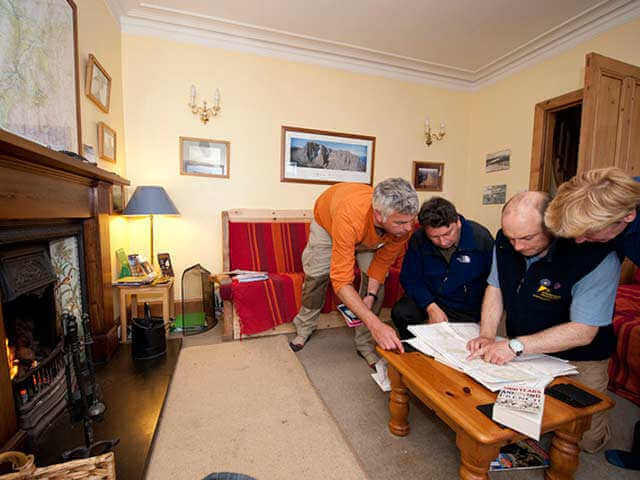
Enjoy the open fire and discussions in the lounge
Hiking with kids is not always a fun experience but our top tips could change that around for you. Boat of Garten, Scotland is rich in natural beauty. Its rural setting lends itself to plenty of hiking opportunities for not only individuals, but also families.
So, if you’re looking to go hiking with your kids around Boat of Garten, here are 8 great tips on how to make the best of your trip:
“Every hiking trip has to be planned and prepped for,” says Madeleine Walder, a travel blogger at State of writing and Essay Roo. “This is especially important when you bring your kids along for the trip. You’ll need to plan your day with the kids in mind – when they’ll be energetic, when they’ll get tired, and so on.”
Here are things you’ll need to pack for everyone in the family:
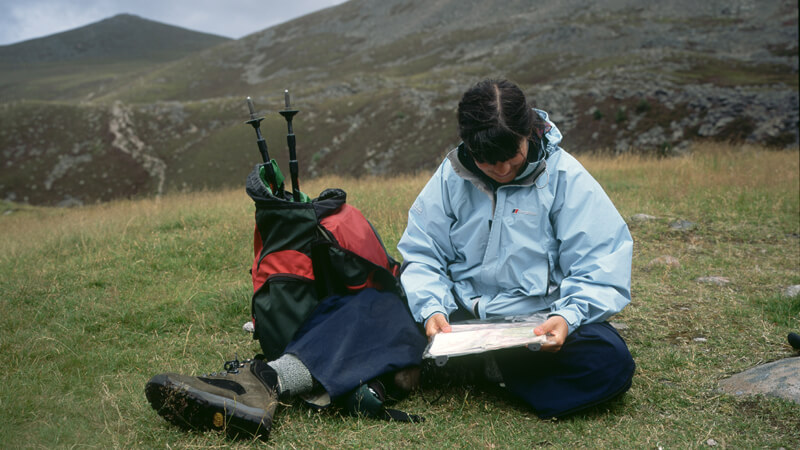
A female walker seen sitting down resting and studying her map, wearing her boots and waterproof clothing, with her rucksack and walking poles, Cairngorm Mountains, Scotland.
Model Release
Photograph by David Mansell 07831 559901 mobile
2. Dress Accordingly
Next, it’s important to dress for the trip. Consider the following scenarios:
However, no matter the hiking weather, be sure to have the right clothing, including:
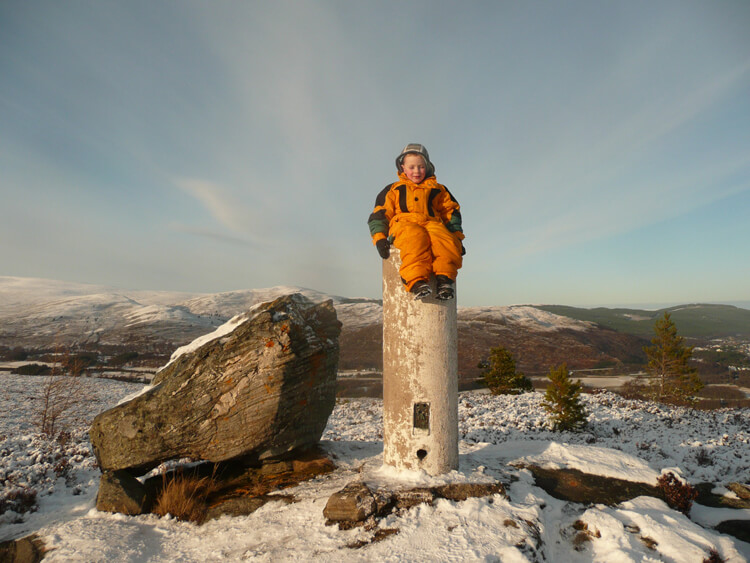
Spring is a great time to get the kids out hiking. There’s still snow to play in but it’s not as bitterly cold as winter.
3. Choose Varying Trails And Terrains
Children love to explore. So, when choosing a trail, look for the following features:
For example, Frank Bruce’s Sculpture trail at Insh; Gruffalo walk in Culloden Woods; Boat of Garten to Loch Garten – plenty of fallen trees to explore as it is the RSPB policy to leave fallen wood where it lies for the other forest beasties to benefit from.
Who knows? Your kids will come up with great adventure ideas when they’re on the hike. With wild imaginations, anything is possible for kids.
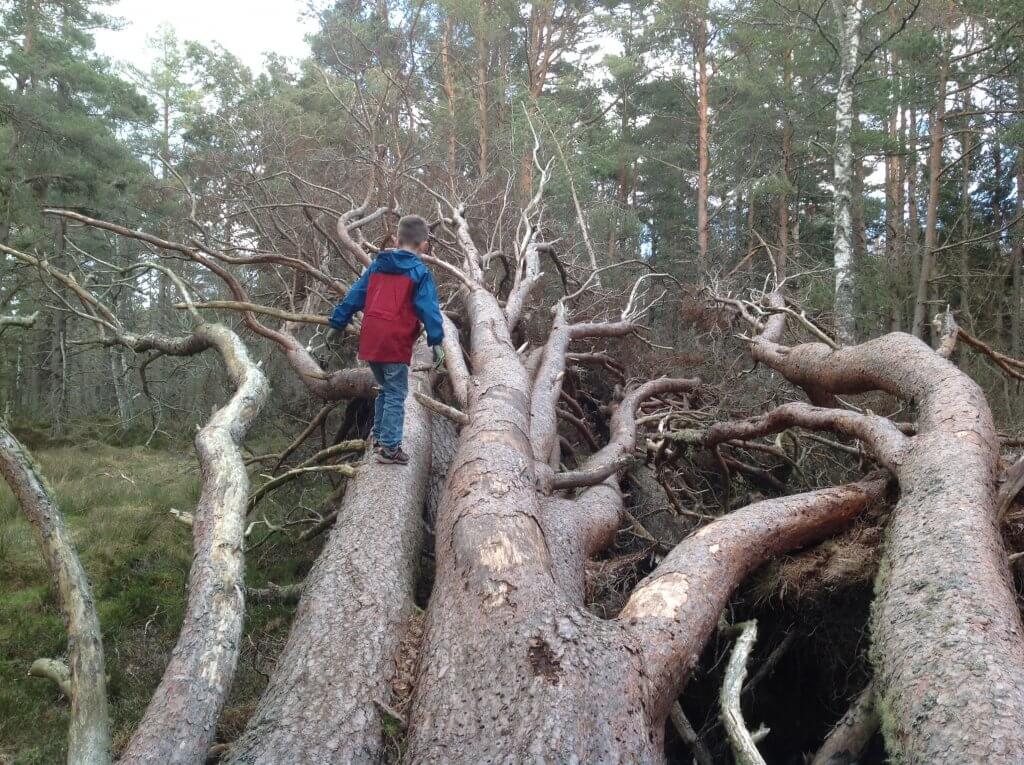
What fun teetering along the trunk of a fallen tree.
4. Invite Friends
Why hike by yourselves, when you can take friends along for the trip?
Kids might have friends that they want to invite to the trip. So, feel free to let them invite friends over for the trip. Just make sure that your child’s friend(s) are well-prepared for the trip.
If you have a dog, then you can let them join your trip as well! But again, everyone (including Fido) will need to be prepped for the trip.
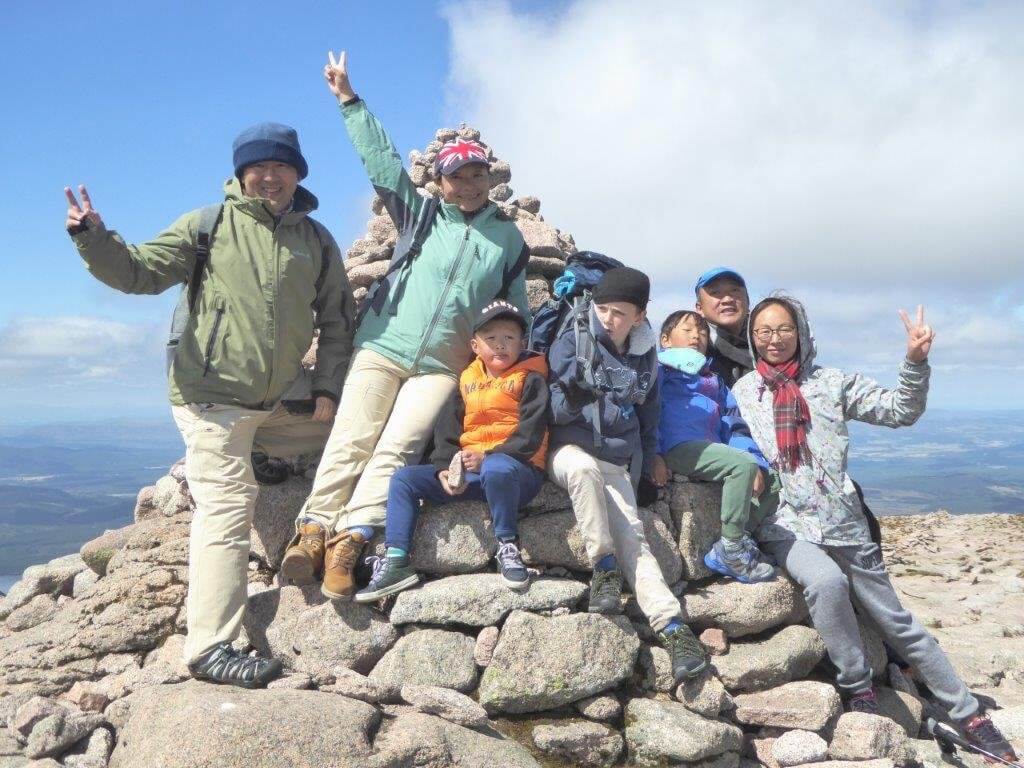
5. Take Breaks
It’s natural for people to take breaks. Now, with kids, they’ll need to take plenty of breaks, especially when they’re hiking. Even if they start complaining that they’re not tired just yet, you’ll still need to have them break.
On the other hand, kids will complain about being tired. Again, that’s why it’s important to plan for frequent stops.
Now, when you and the family stop for a break, don’t just sit down somewhere. Also, make sure that everyone “refuels,” meaning that you all take in some food and drink before continuing the hike. A snack favorite for kids is a medley of snacks, including trail mix. Wild food/foraging could become a new favourite if you’re out at the right time in the right place.
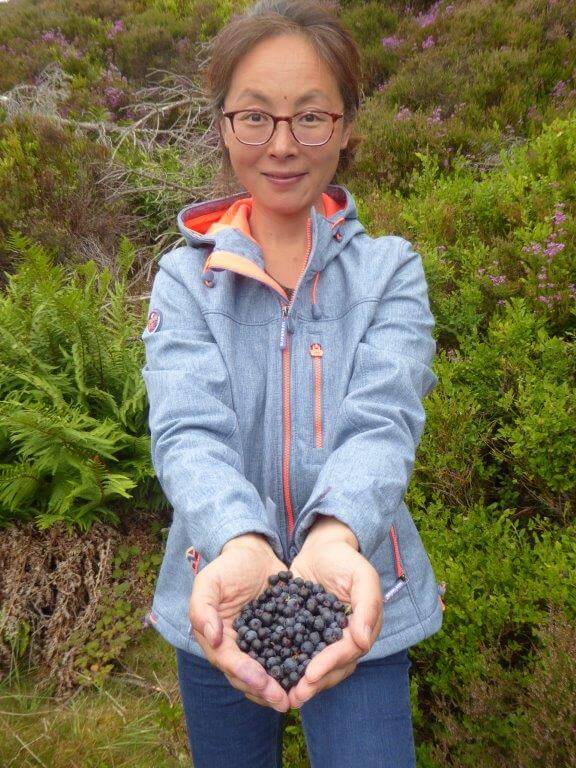
6. Be Positive
Hiking is about enjoying yourself. Although your kids might whine about something along the way, why not spin it around with fun questions like:
The idea of asking questions is to keep your child engaged, and to prevent them from feeling bored or sad.
Also, treat your child with respect. If your child is visibly tired after a while, then it’s time to go home.
7. Take It Easy
“When hiking with your kids, it’s okay to relax,” says Cameron O’Neill, a lifestyle writer at Lia Help and Boomessays. “Try not to think about the time passing by, when you don’t have anything else planned for the day. Focus on hiking with the family. Focus on taking in nature, and enjoying it with your kids. Remember: There’s no hurry. Take your time. Take it easy.”
8. Make Hiking A Family Tradition
Family traditions create memories that last a lifetime. So, why not make hiking a family tradition?
Whether you and the family take hiking trips monthly or yearly, this family tradition is for you to create. This family tradition also allows children to embrace nature as much as possible.
Conclusion
As you can see, hiking in Boat of Garten, Scotland can be a fun experience for you and your child. Therefore, take these 8 tips, and have fun (and be safe) hiking with the family!
If you’re looking for more help and advice planning your walks in the Cairngorms, or if you’d like to try one of our ready-made itineraries please get in touch.
Top tip from Scot Mountain Holidays: Experience has also taught us that having animals along on the walk helps to motivate the kids to keep going. This was particularly the case when we were persuaded to try Trekking with a Donkey in France. We then took that experience to develop our own version into the Highland Wilderness Glamping Adventure – to create memories which will last a lifetime.
Elizabeth Hines is a writer and editor at UK Writings and Academized. She is also a contributing writer for Write my paper. As a content marketer, she writes articles about latest tech and marketing trends, innovations, and strategies.
All content © Copyright Scot Mountain Holidays 2025
Responsive web design by Summit Web Solutions